COPYRIGHT 2009 DICK NEWELL
 |

ANALYZING THE SQUIRREL TRACK

Front~Rear: Four long digits in the front is what you will normally see even though there is a vestigial toe hidden within the heel pad. There are three distinctive pads in the upper part of the front heel and under optimum conditions you might also observe two proximal pads in the bottom of this track. The rear track shows five digits and four distinctive heel pads.
 |
 |
 |
Gait: A walk or gallop are its most common gaits.
The tracks of this little lightweight are often difficult to read. Look for the traditional rodent track with four digits in the front and five in the rear. While its long tail sometimes brushes the details away its long digits and claws often register. Look for a trail width of about 2 1/2" and check the heel pads to ensure your identification.
 |
Right~Left: The smallest toe on the front track is on the outside. If you can see five digits in the rear track the smallest will also be on the outside.
GROUND SQUIRREL
 |
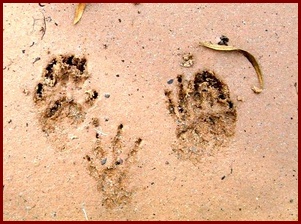
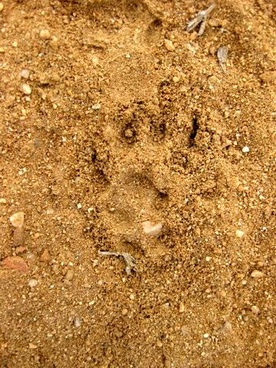
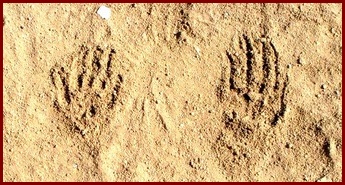
 |
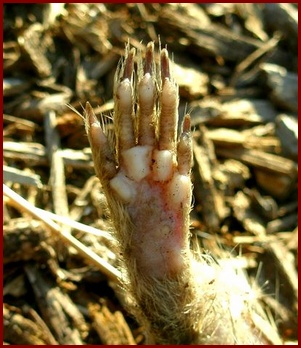
SQUIRREL BROWSE

The California Ground Squirrel digs a series of lateral tunnels and being an omnivore, feeds on a wide variety of foods such as eggs, insects, vegetative matter and seeds from these pine cones. They use a variety of sounds, tail signals and scent production to communicate with each other. A sentry or lookout is occasionally heard and subsequently observed standing in the upper part of a shrub or bush while broadcasting a series of high pitched bird-like warning signals.
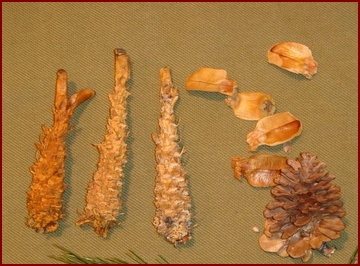
 |
